An architectural journey through Ukraine’s Soviet atomograd city, built for the families evacuated from the Chernobyl nuclear disaster
What and where is Slavutych?
Slavutych is a purpose-built city in the north of Ukraine, that was created to house civilians evacuated from the Chernobyl disaster of 1986. It is situated 200km directly north of Kyiv, 45km east of Pripyat (the main city serving the Chernobyl Nuclear Power Plant) and 40km west of Chernihiv, the city we used as a base for our visit. ‘Slavutych’ is the ancient Slavic name for the Dnieper, the longest river in Ukraine and the fourth-longest in Europe. The city is 10km west of the Dnieper.
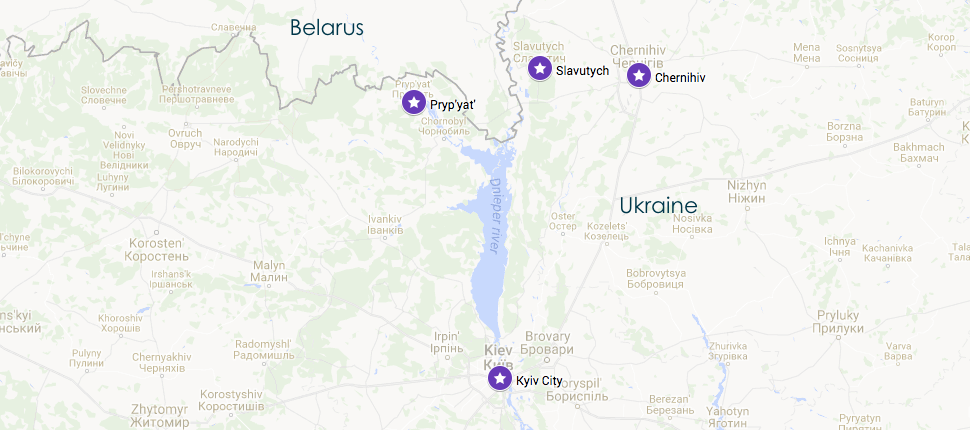
The new city was needed quickly. The nuclear accident at Chernobyl took place on 26th April 1986 and in September 1986, the Kiev Zonal Research Institute for Experimental Planning (KievZNIIEP) was tasked with designing a municipality that could accommodate a population of 30,000 plus. To facilitate the process a team was dispatched from the Central Research and Planning Institute for Urban Development (TsNIIP) (now part of the Russian Academy of Architecture and Construction Sciences) in Moscow. The group included Moscow’s chief architect at the time, Leonid Vavakin, as well as a number of other urban developers, engineers and architects, and the plans for the new city were finalised in just two months. The job of chief architect for Slavutych was given to KievZNIIEP’s Fedir Borovyk.
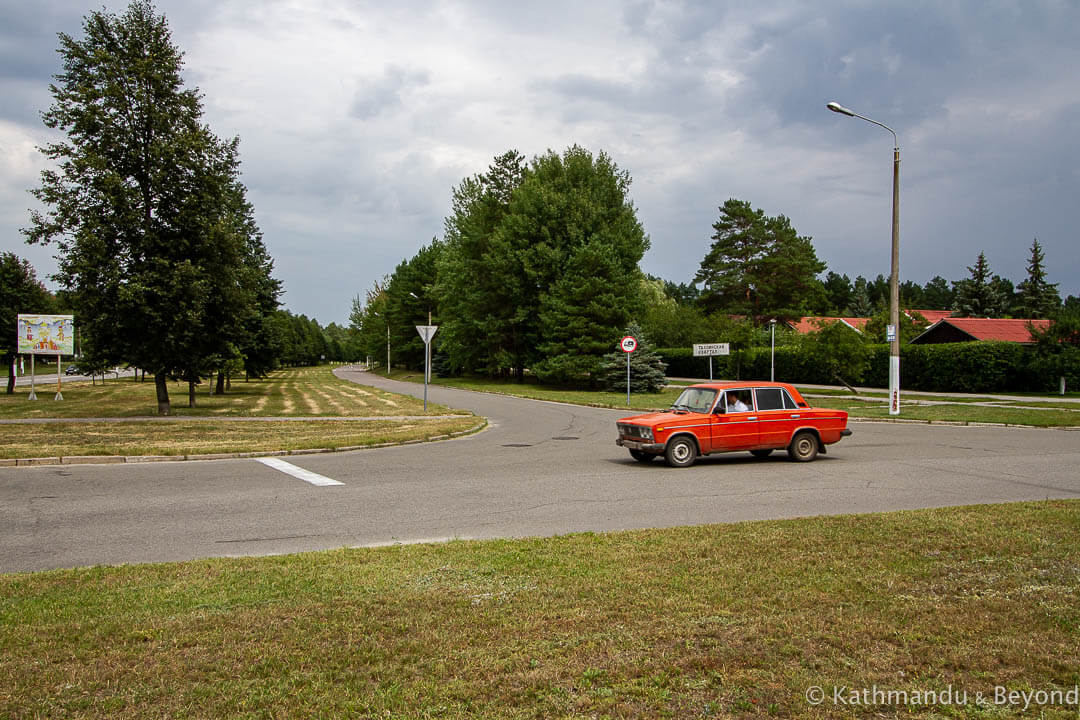
The initial idea was to establish the city near the banks of the Dnieper River but the original area chosen turned out to be a swamp and so the site was moved 20kms to the east where the ground was more suitable for building on.
Characteristics of the town included maximum preservation of the existing pine forest, pedestrian zones and a network of bicycle routes. Everything the new townsfolk needed would be in easy reach of their new homes. What’s more, the urban planners considered the psychological and emotional repercussions of those who were being relocated from Pripyat, and the intention was to make Slavutych as desirable a place to live as possible. This included plenty of green space, a high level of accommodation and good public amenities. It also meant that there were purposely no Soviet symbols or atomic-related expressionism in the city. For example, Slavutych was the only settlement of any size in Ukraine that did not have a statue of Lenin erected within.
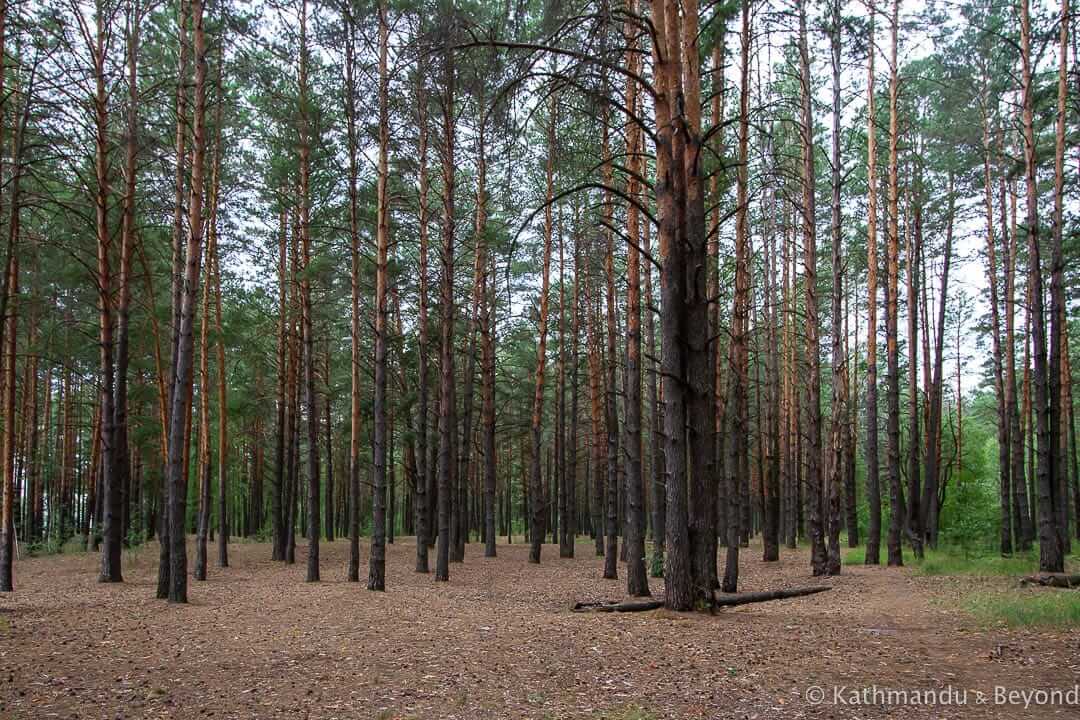
The construction work took two years to complete and the first inhabitants settled in the city in October 1988. Slavutych was the last atomograd (purpose-built cities designed to accommodate those who worked in nuclear power plants) to be built in the Soviet Union and was, and still is the youngest city in Ukraine.
The primary reason why a task of this magnitude could be completed in such a short period was that the residential parts of the city were designed and built by architects and workers from eight different Soviet republics.
The eight republics involved in the construction of Slavutych were Armenia, Azerbaijan, Estonia, Georgia, Latvia, Lithuania, Russia and Ukraine. Under the directorship of Fedir Borovyk and his team, representatives from each republic were given the job of planning and building a section of the city that was indicative of the architectural style in their own republic. The exception was Russia, which was tasked with designing two parts of the new city.
As well as architects, the necessary building materials, including interior finishings and even some of the labour, were brought in from the respective republics. Originally, Slavutych was divided into ten quarters: Yerevan, Baku, Tbilisi, Moscow, Leningrad, Belgorod, Vilnius, Riga, Tallinn and Kyiv. Three more quarters, Chernihiv, Dobrynja and Pechersʹkyy, were added in the 1990s. Most of the accommodation in Slavutych is in the form of apartments, with only about 20% of it comprising family houses.
Although the motive behind the collaboration was a practical one rather than connected to ideology (the job needed doing and it needed doing fast), it is the architectural contribution of the eight republics drafted in to construct the city that makes it unique and, therefore, a fascinating place to visit. A bit like an Expo/Trade Fair, Slavutych showcases different trends in late Soviet Modernist architecture all in the one place.
Although Slavutych was up and running within two years from its initial conception, as mentioned in this article, the city was far from finished by the time the Soviet Union collapsed in December 1991, with only approximately half of it completed as per the blueprint. The original plan in the way of housing was more than double what it was by this point in time and buildings such an administrative centre, a structure for the Ministry of Energy as well as a theatre/cultural centre were never realised. What’s more, many sculptures intended for Slavutych’s public areas were also never created. This included one by the renowned Georgian artist/sculptor, and current president of the Russian Academy of Arts, Zurab Tsereteli, who was supposed to create a piece of art that would be positioned at the entrance to the city.
The main cause as to why the city didn’t reach its full potential is that the finances began to dry up.
The first difficulty arose after the destructive 1988 Armenian earthquake, which happened on 7th December of that year. The tremor was so devastating that resources allocated for the construction of Slavutych were soon diverted to Spitak, the nearest town to the epicentre of the quake, as well as other regions of northern Armenia that desperately required help with rebuilding. But, it also appears that some of the republics, with Azerbaijan and Estonia being specifically mentioned in the article, withdrew their support for the project before it was completed. I can’t get to the bottom of the reason(s) for this (and I’m quite surprised that they could get away with it) but the city was bailed out by the company which operated the Chernobyl nuclear plant. The company ultimately ended up paying for about 85% of the costs of the infrastructure and public facilities.
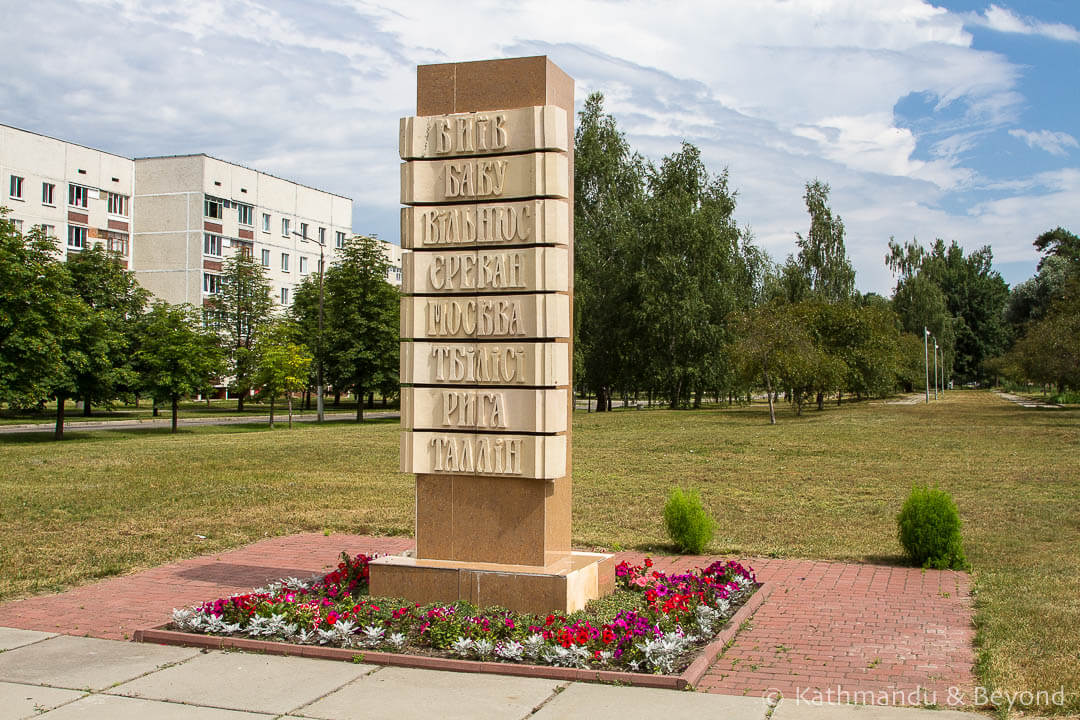
Present day Slavutych
The approximate population of Slavutych is 25,000 (census 2014) and roughly 9,000 of the inhabitants worked at the Chernobyl plant before it was shut down in 2001. Since the decommissioning, this number has dropped to around 3,000 with most employees working in the fields of monitoring, research and maintenance. Those who still work at the plant travel between the two destinations using a commuter train that passes through the Belarusian Polesie State Radioecological Reserve, an area established in 1988 to enclose the territory of Belarus hit the hardest by radioactive fallout from the Chernobyl disaster.
After the shutdown of the plant, the city was proclaimed a special economic zone in an attempt to improve the employment prospects of those who lost their jobs but, to date, the population is steadily declining as residents of Slavutych leave in search of better opportunities elsewhere.
What there is to see in Slavutych
The districts in Slavutych are positioned in a horseshoe-like shape around the central square, where shops, the city’s administrative building (town hall) and the local museum are located. The sports zone/stadium is directly north of the central square and the city park is south of it. Beyond the park is the train station from where workers depart for Chernobyl.
Buses and marshrutkas (fixed-route minivans) also arrive and depart from outside the train station and the logical way to discover Slavutych is to work your way through the quarters in either a clockwise or anti-clockwise direction and visit the places of interest in the central square en route. Slavutych is a compact city and it takes about four hours to see it properly on foot. We began our exploration in the Yerevan Quarter, making our way anticlockwise through each of the other quarters until we got back to where we started.
West of the Tallinn Quarter, the Medical Centre and the relatively new Church of God’s Prophet Elijah are also worth seeing.
Map of Slavutych’s Residential Areas
Photos highlighting the different styles of architecture in Slavutych
Yerevan Quarter
To give credence to the above statement that the city wasn’t completed as per the original blueprint, Armenia is the only republic that realised its plans in full. If you’ve been to Armenia, you will instantly recognise the distinctive pink tufa, a limestone rock of volcanic origin that is used to construct countless buildings throughout the country and has earned Yerevan the nickname, the “Pink City”.
The Memorial to the Builders of the Yerevan Quarter marks the entrance to the district. The 8-metre stele is topped with a ‘guardian’ eagle and the wall behind it is engraved with the names of the architects and builders responsible for the construction of the Yerevan Quarter. The sculptor was Stefan Lazaryan, a distinguished Armenian artist who also worked on the important Sardarapat Memorial, which is located 50kms west of Yerevan.
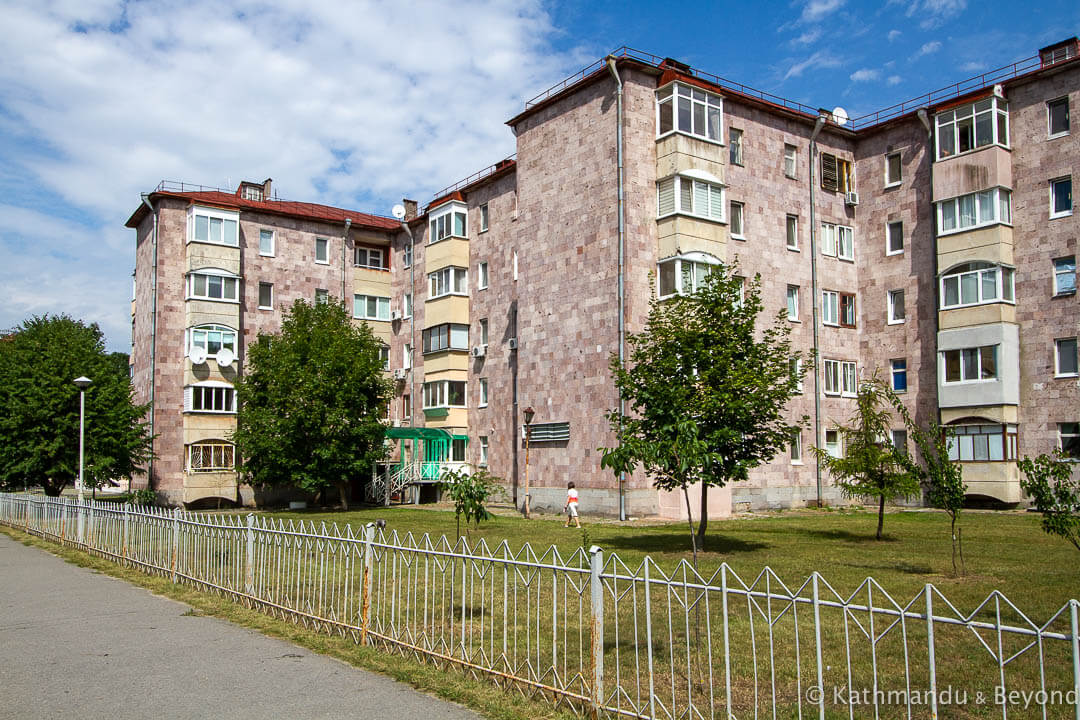
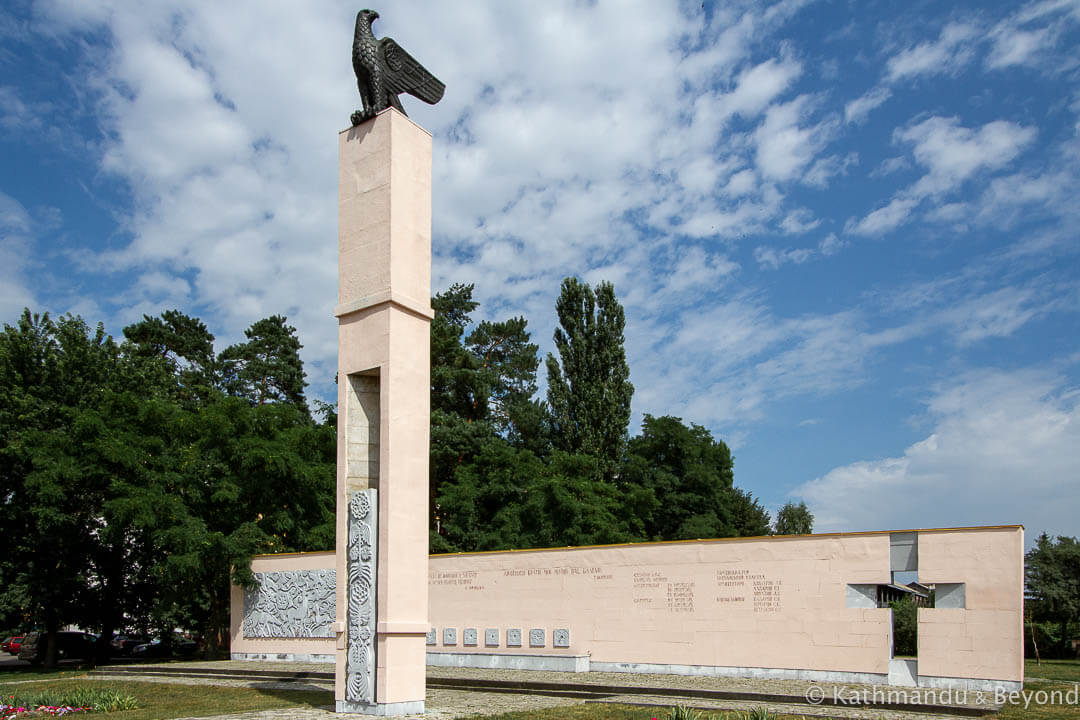
The Memorial to the Builders of the Yerevan Quarter
Baku Quarter
Each of the five-storey buildings in the Baku Quarter feature different styles of windows prevalent in Islamic architecture. The construction material used to create the honeycomb walls of the apartment buildings hasn’t weathered as well as materials used in some of the other quarters but the Baku district still stands out for its diversity and is one of the most interesting parts of the city.
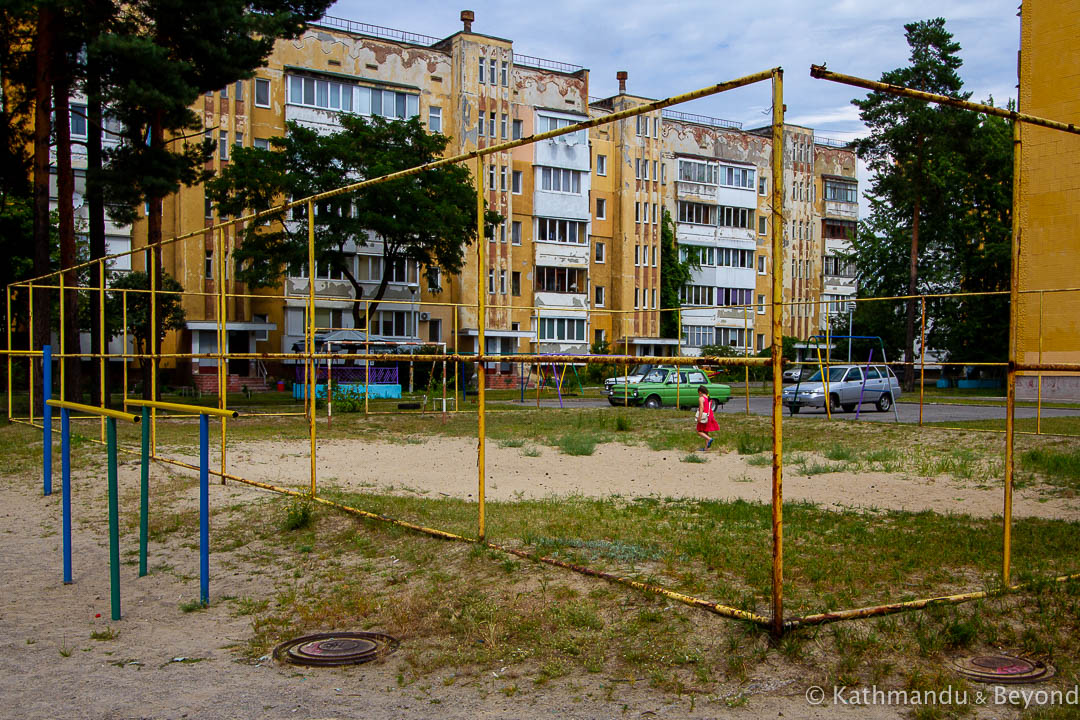
Tbilisi Quarter
The architecture and decor in the Tbilisi Quarter are typically Georgian and on the edge of the neighbourhood, close to the town centre, is a monument inscribed with the names of the eight capitals of the republics that participated in the construction of the city.
The ‘Gratsiya’ (Grace) Sports Complex, which has an impressive sport-related metal relief above the entrance, is for the use of residents from all three Caucasus neighbourhoods. The panel work, which was created by Georgian artists using the punching technique, was made at the visual arts and sculpture production departments of the Art Foundation of the Armenian SSR, which would part-explain why the leisure centre is for communal use across the three quarters.
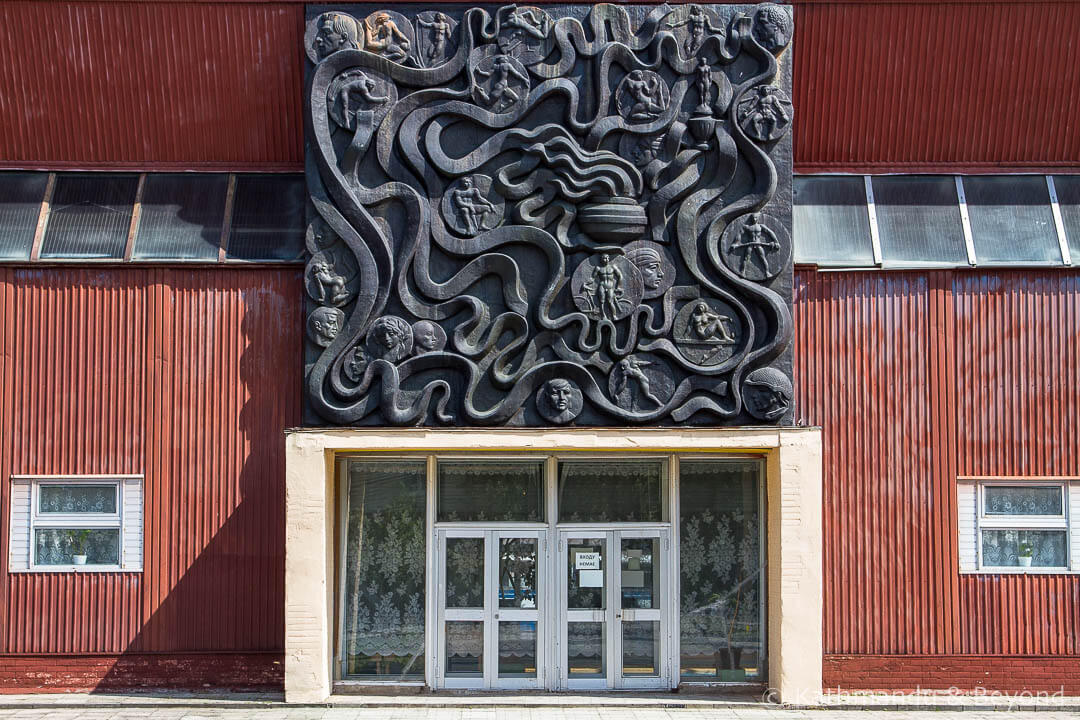
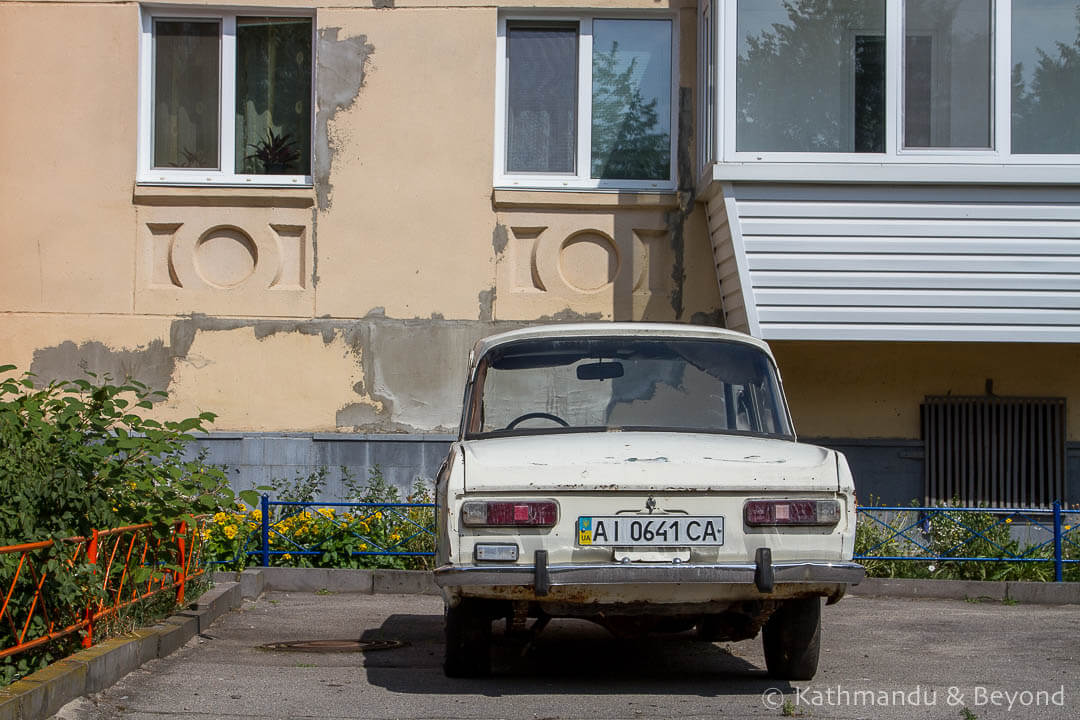
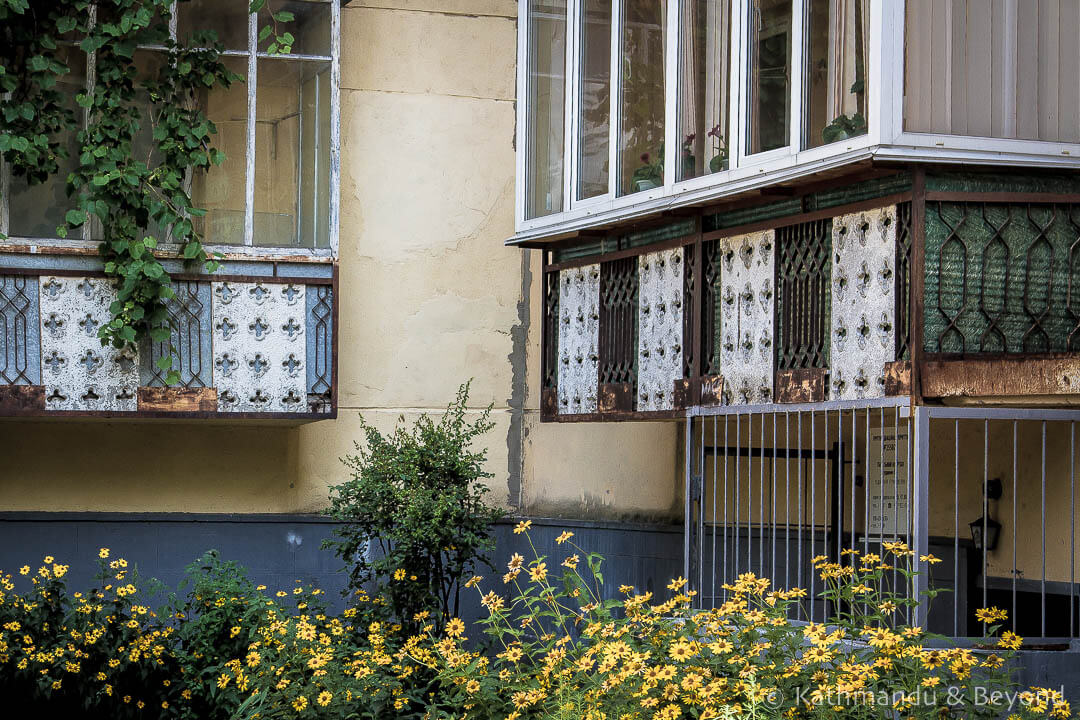
Chernihiv Quarter, Dobrynja and Pechersʹkyy Quarters
To the east of the Caucasus and the Russian quarters are the three neighbourhoods that were added in the 1990s. Architecturally, these later quarters aren’t as interesting as the original ones, although it is worth walking through the backside of either the Baku or the Tbilisi quarter to take a look at the Chernihiv one.
As an aside, there was a suggestion at the time from some of the architects involved in the project that it would have made more sense to design and build a new district in the city of Chernihiv to accommodate those who had been displaced from Pripyat rather than construct a new settlement from scratch. The argument was that the train line to Chernobyl could have easily been extended and placing people in an already-established city would have helped with employment issues for those not working at the plant.
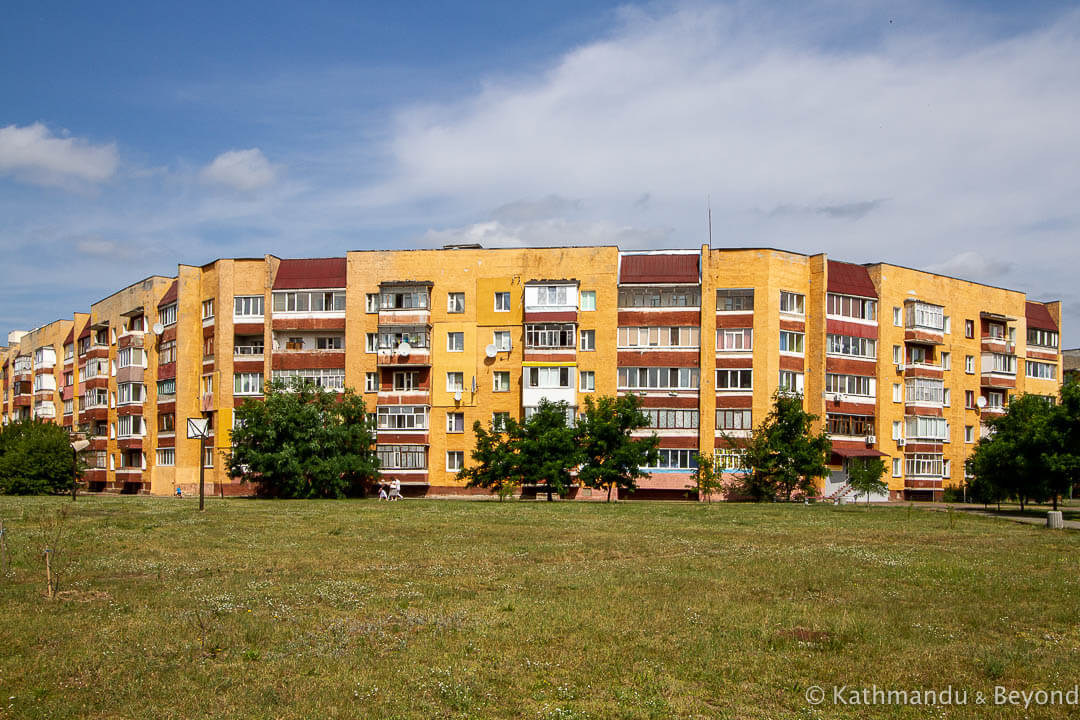
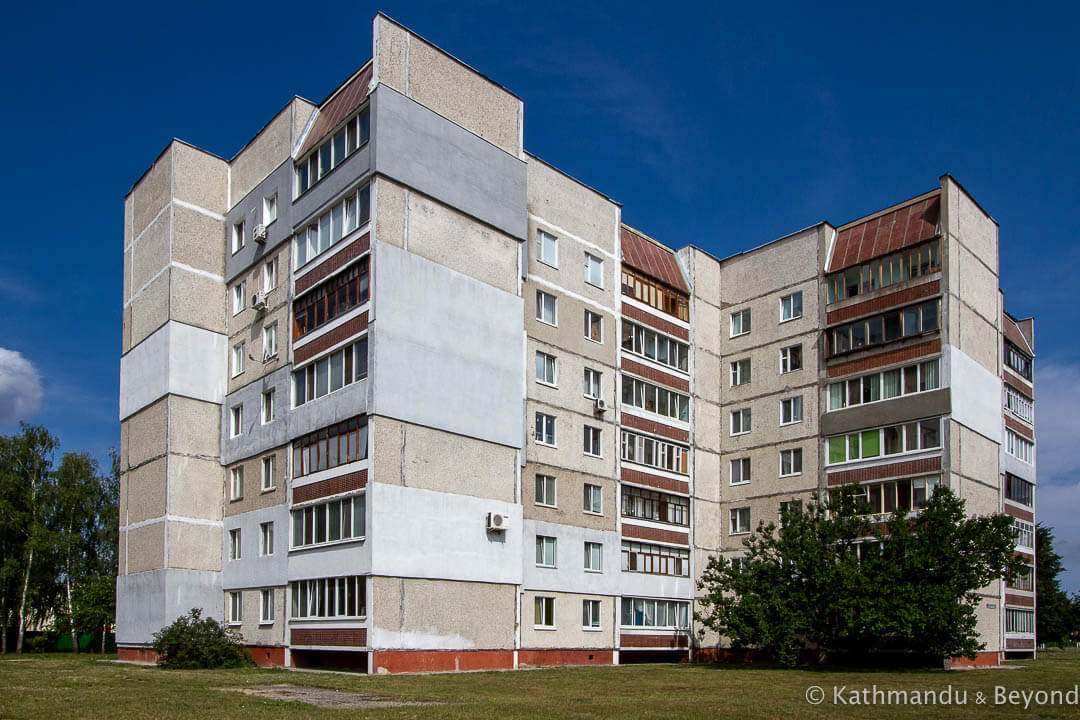
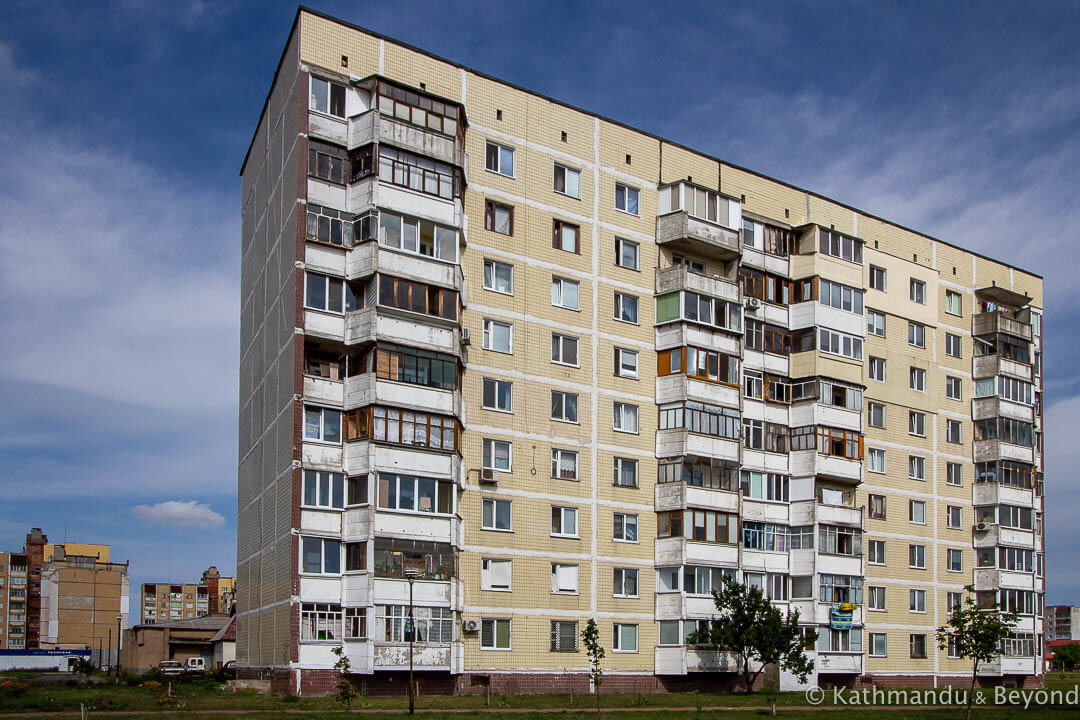
Examples of different apartment buildings in the Chernihiv Quarter
Moscow Quarter
Leonid Vavakin, who served as Chief Architect of Moscow between 1987 and 1996, was tasked with planning the Moscow Quarter of Slavutych. Because the design is typical of Soviet micro districts of the 1960s through to the 1980s, the Moscow district is the most nondescript of all the quarters.
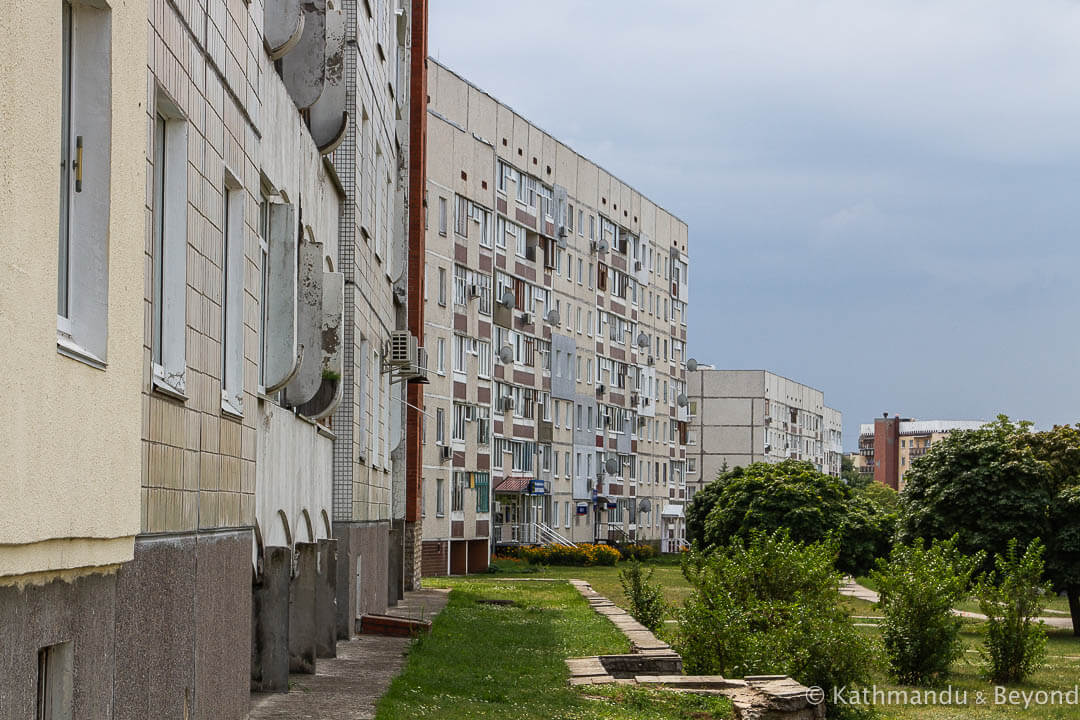
Leningrad and Belgorod Quarter
Directly north of the Moscow Quarter is the Leningrad Quarter. It comprises three, same-style, residential buildings arranged around a main boulevard that leads to the district’s distinctive sports centre at the top end. The now-defunct ornamental pool that runs through the centre of the boulevard represents the canals of Saint Petersburg.
One of the clusters of residential buildings is named Belgorod Quarter in honour of the architects and builders from the Russian city of the same name who constructed it.
At some point, the name of the quarter was changed to Neva Quarter.
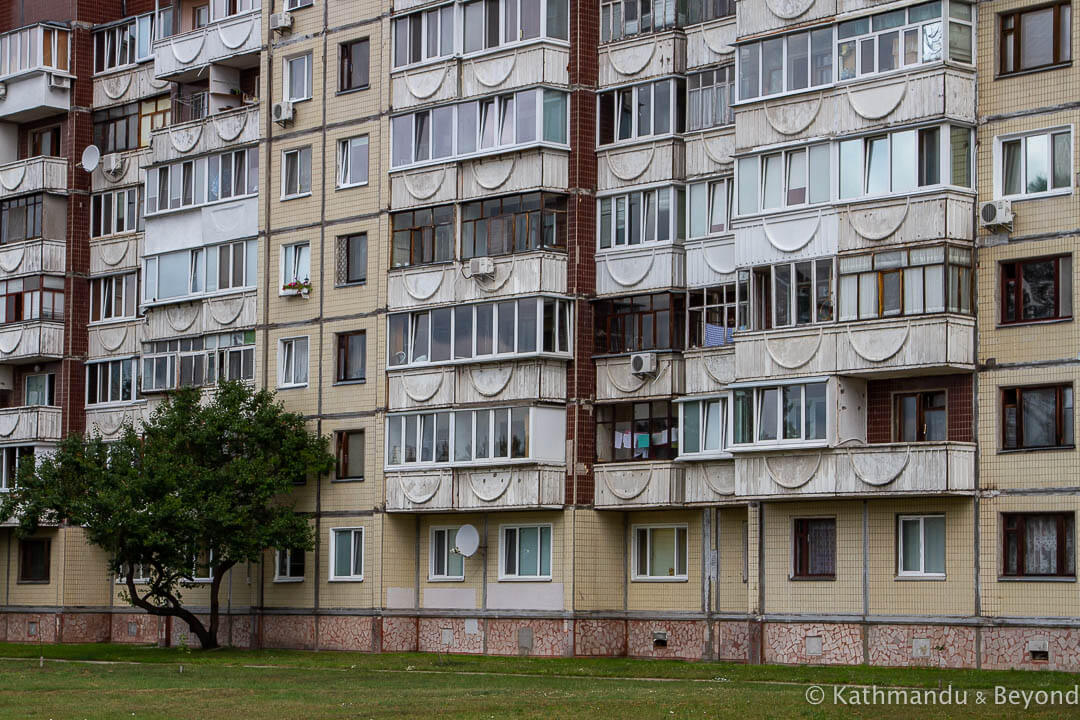
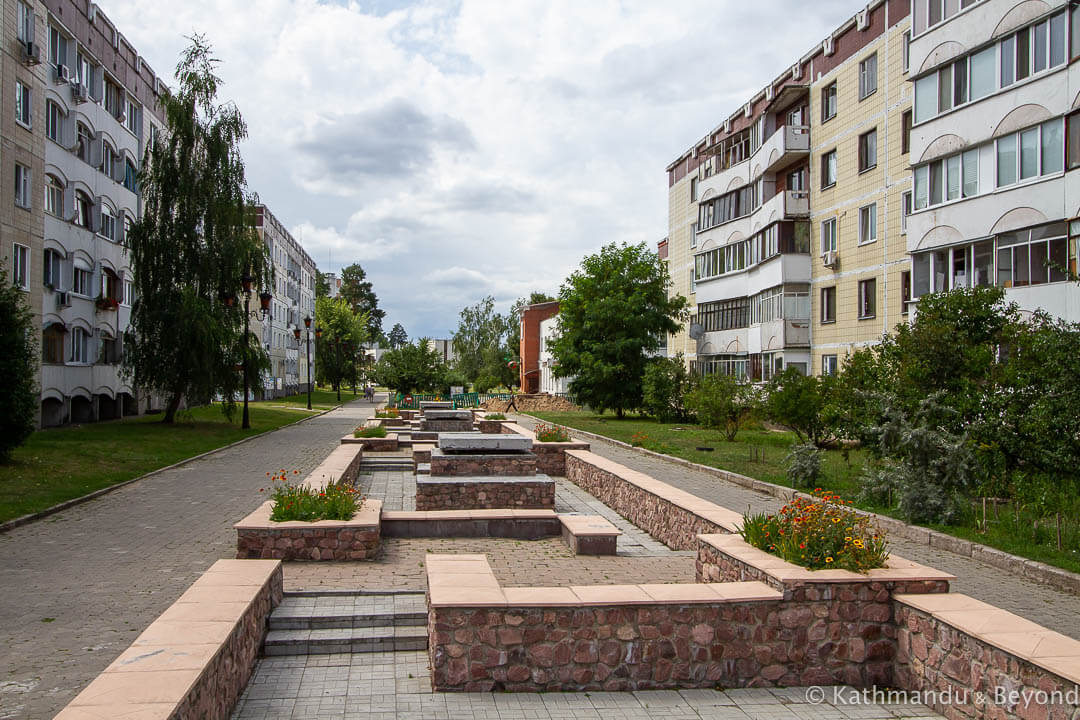
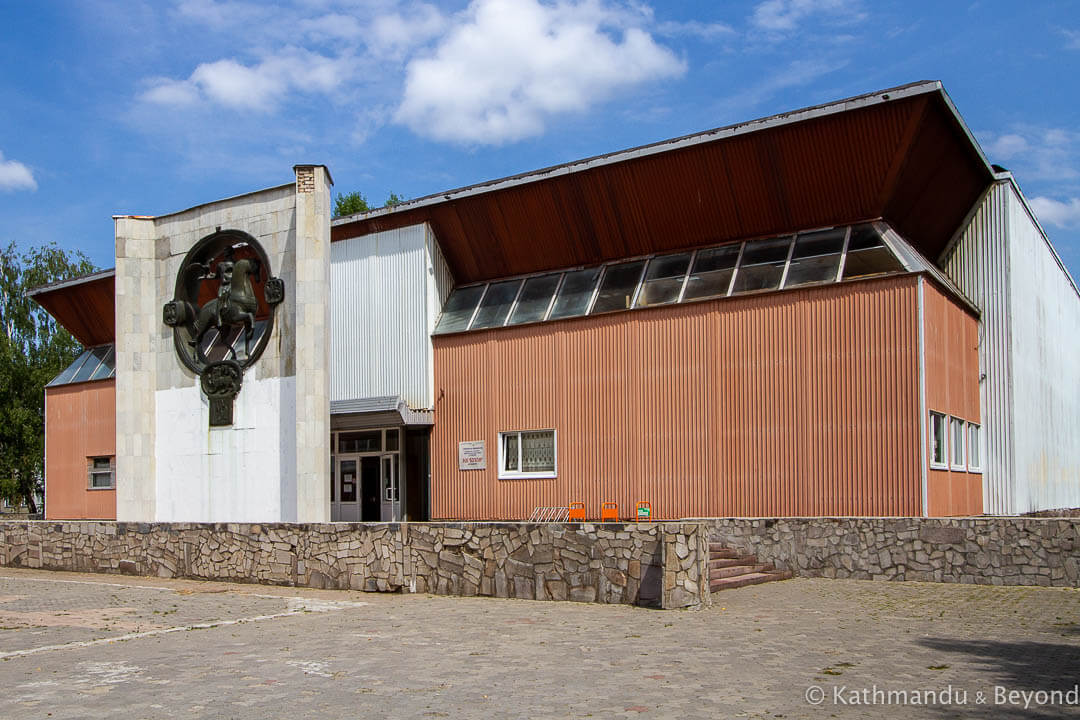
Vilnius Quarter
Vilnius is the furthest quarter from the centre of town and therefore the quietest and closest to the forest. As well as prefabricated apartment buildings, the quarter is also scattered with forty-one one-family houses which are characteristic of Lithuania but a rare sight in Ukraine. The district’s planners opted for functionality over creative appearance which resulted in a part of the city which was simple in design but high on quality.
The Vilnius Quarter has similarities to Visaginas, an atomograd city in the far east of Lithuania that was purpose-built to house the workers of the nearby Ignalina Nuclear Power Plant.
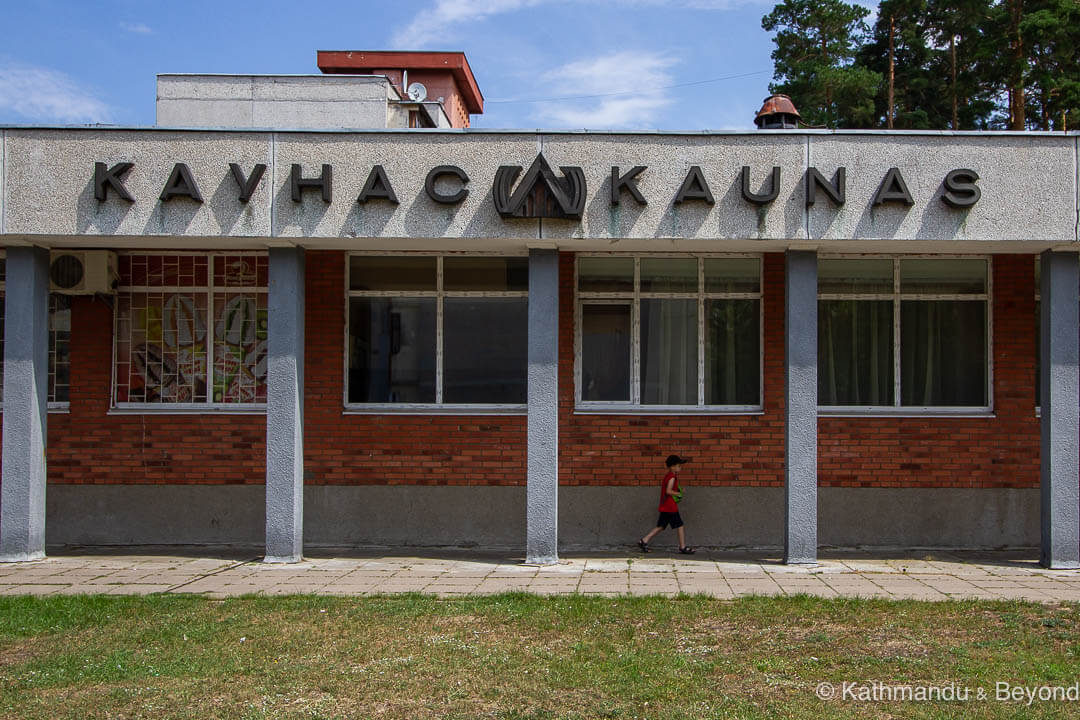
Riga Quarter
Design and standard-wise, the Riga Quarter is considered one of the most highly regarded districts in Slavutych, not only by the residents who moved in but also among the architects and planners of the other Soviet republics involved in the project. The female Latvian architect, Zane Kalinka, responsible for the Riga Quarter had just turned forty when she was given the job and her progressive and modern approach is reflected in the neighbourhood’s well-thought-out and socially interactive zones.
The quarter’s Marite kindergarten, which unfortunately we missed, is one of the most interesting examples of late Soviet modernist architecture in the entire city.
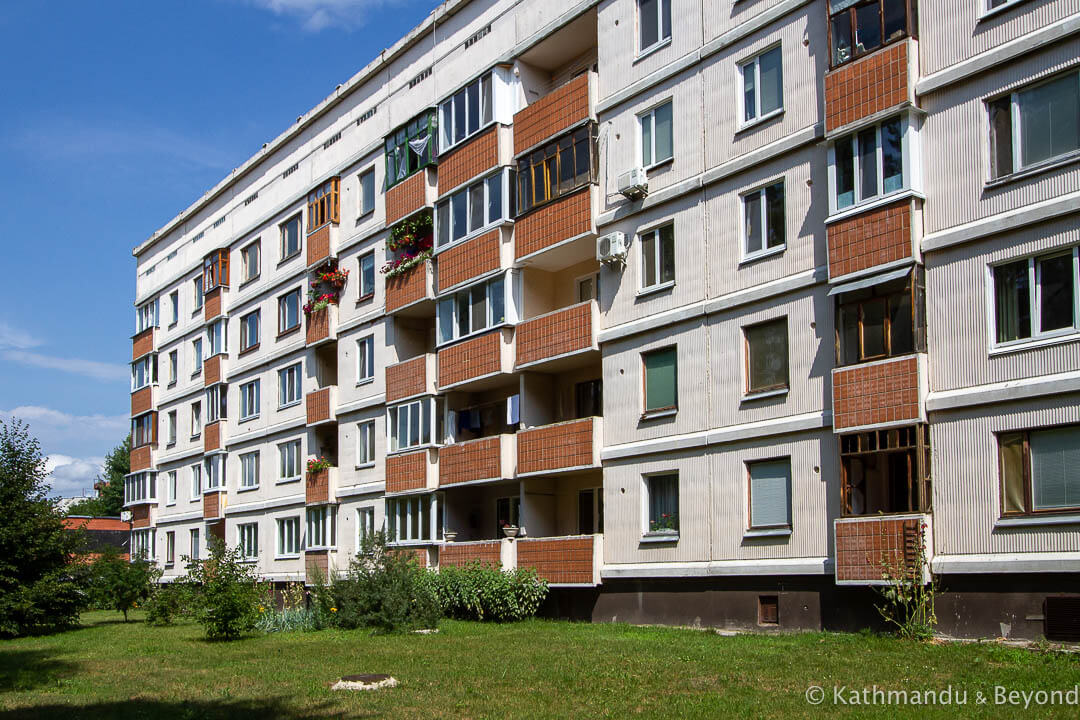
Tallinn Quarter
The high quality of the Estonian building materials and craftsmanship used at the time of construction means that the Tallinn Quarter has fared well compared to some of the city’s other neighbourhoods. On one side, the district merges with the forest and on the other, it has direct access to the town centre. In the forest side of the quarter is a series of prefabricated small wooden houses that are typical of homes still found in rural Estonia and other parts of the Baltic States.
Slavutych’s best restaurant, the Old Tallinn (see below), can be found in the bottom right-hand corner of the quarter.
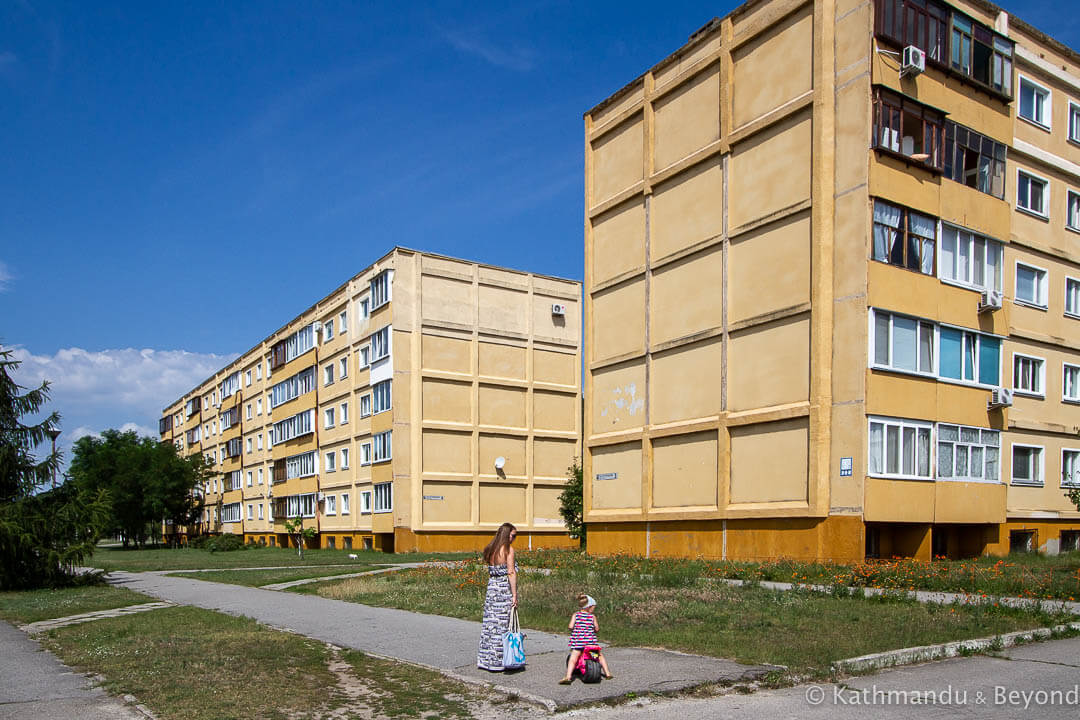
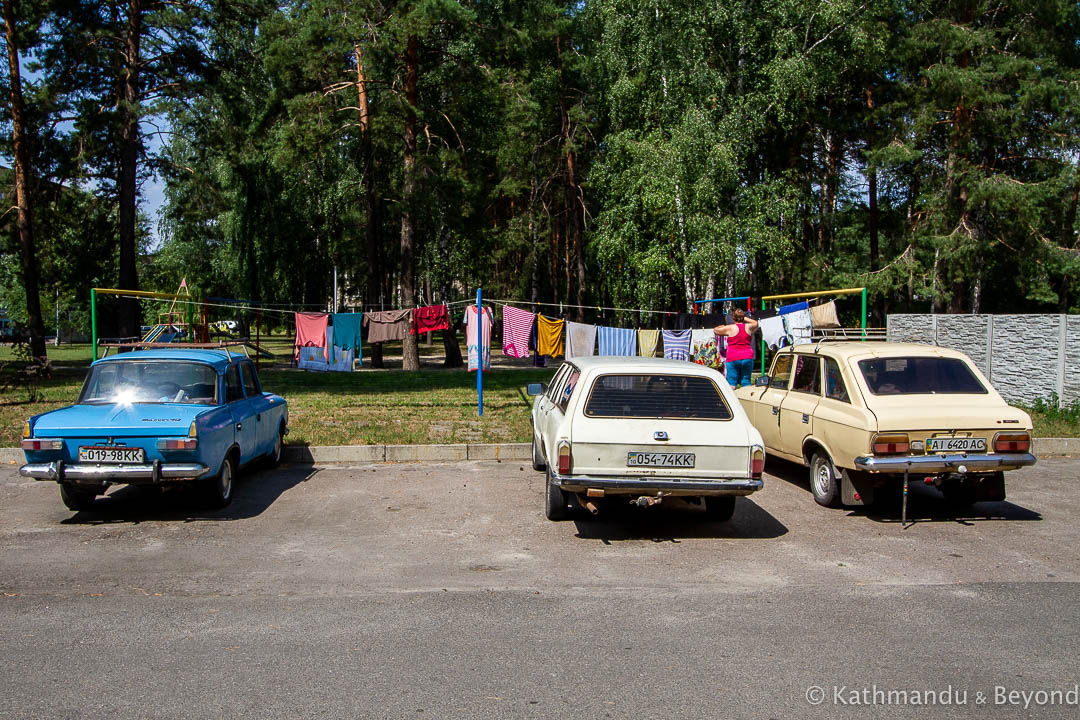
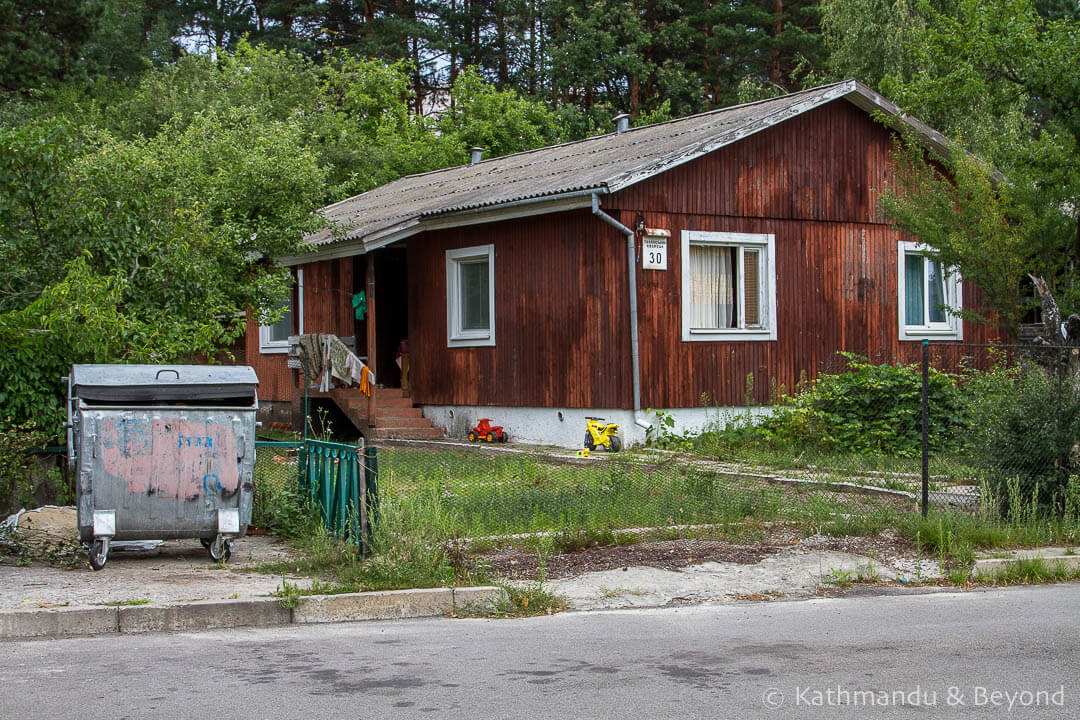
Kyiv Quarter
The Kyiv Quarter is the largest neighbourhood in Slavutych. A sports complex, as well as the “Dolphin” swimming pool, can be found on the quarter’s main square and to the west is a group of densely packed two-storey houses that border the Heroes of Chernobyl Street, one of the main arteries leading in and out of the city.
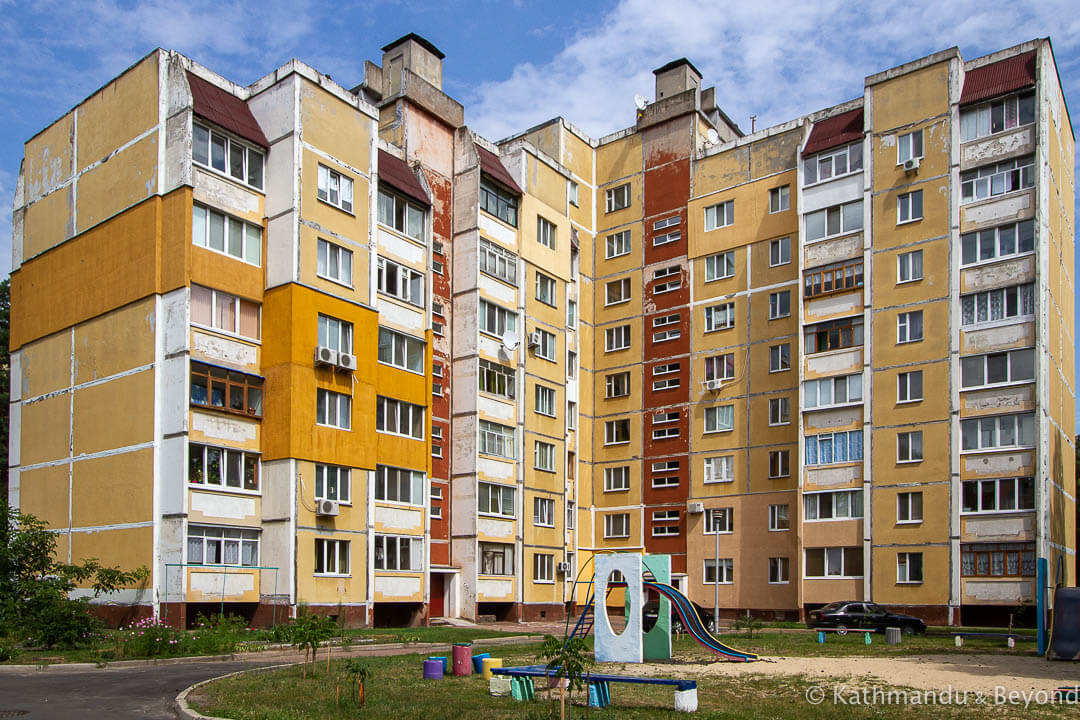
Town Centre
The town centre was designed by a team of architects from KievZNIIEP. Apart from access for service vehicles, the zone is pedestrianised. The square in front of the railway station and the park are part of the town centre but there is limited interest in these areas compared to the main square where the shops and administrative buildings are located. In this part of the town, there are several whitewashed structures, all of which are typical examples of Soviet modernist architecture. They include the city’s town hall/municipal building, Supermarket “Dnieper” (with its distinctive clocktower), and the low-rise Retail Centre which is now part-occupied by the Local History Museum of Slavutych and the Chornobyl NPP (Nuclear Power Plant). Other notable buildings on the square include the Cinematic Concert Hall, the Palace of Children’s Creativity, and the Department Store “Minsk”. With regards to this last building, Belarus did not take part in the construction of Slavutych because it had issues of its own to deal with after the catastrophe at Chernobyl but it did fund the construction of this department store.
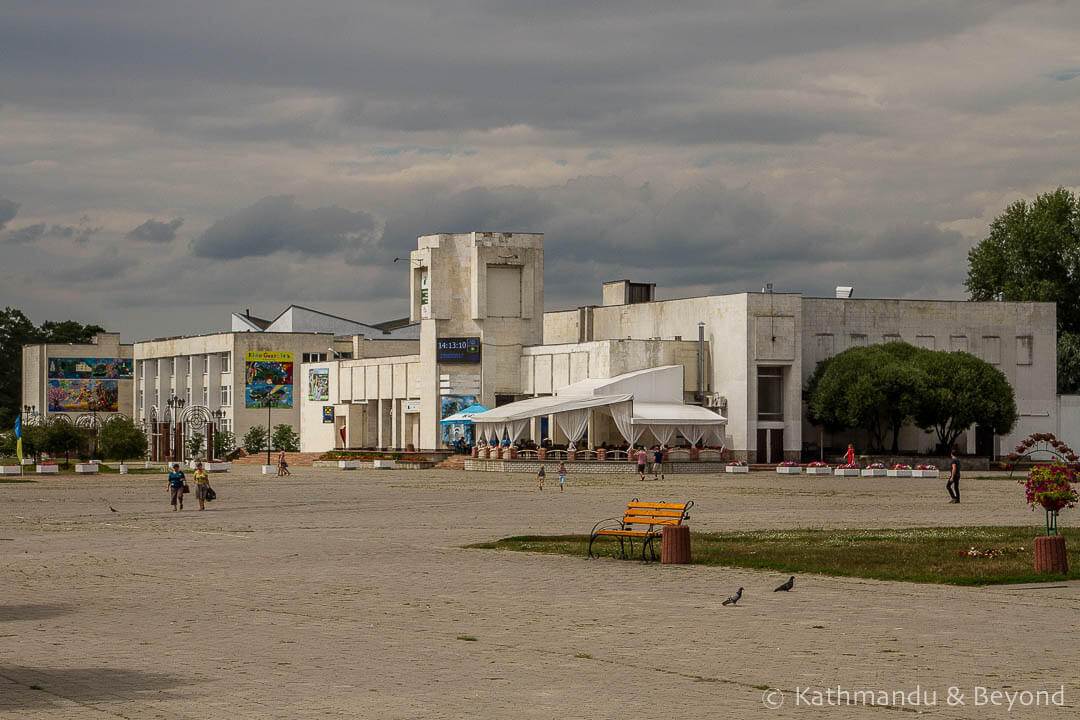
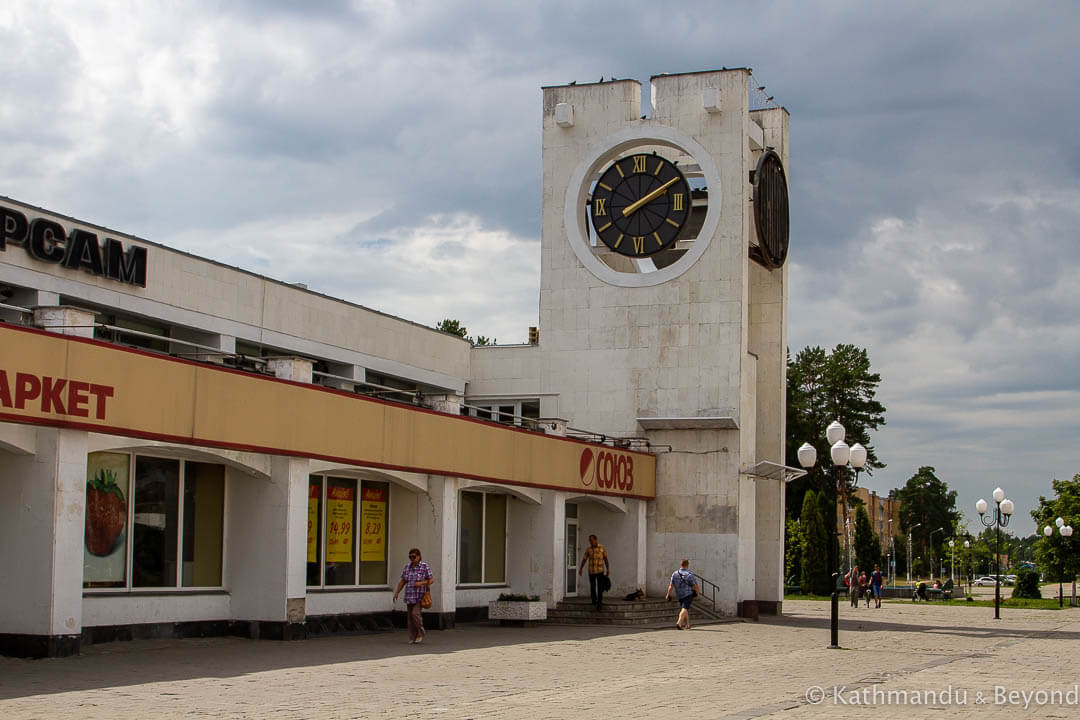
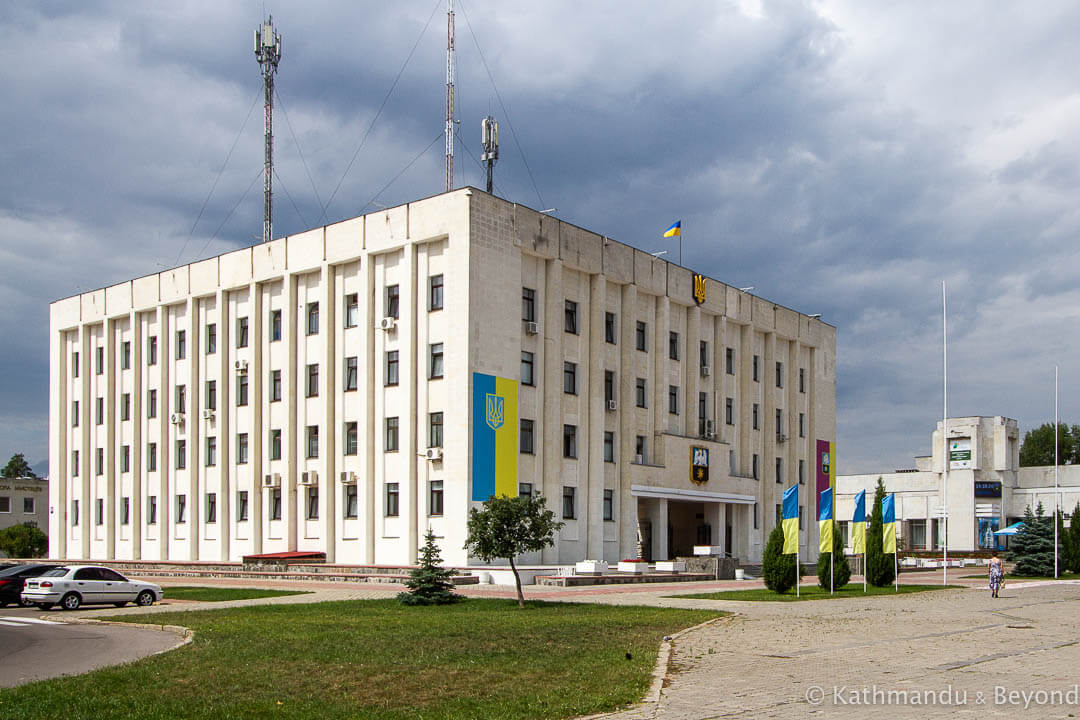
There are also two notable memorials in the town centre. In front of the stadium is the White Angel of Slavutych. Made of artificial marble and erected in 2012, it symbolises a new beginning following the Chernobyl disaster. On the other side of the town square is the Memorial to the Heroes of Chernobyl, which was originally placed there in 1988 but was further expanded in 1996 to include a series of murals created by a group of American artists. I’m not sure for what reason, but the artwork is no longer in situ. The memorial remembers the initial relief workers who entered Chernobyl shortly after the explosion, all of whom died from radiation sickness within a few days, thereafter.
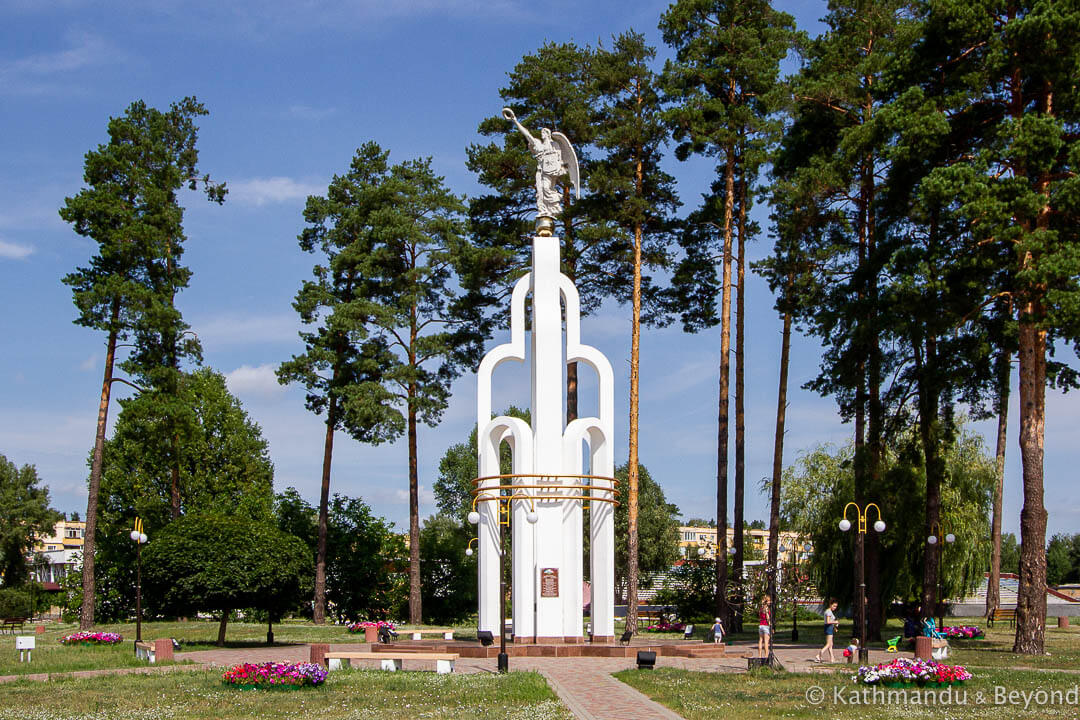
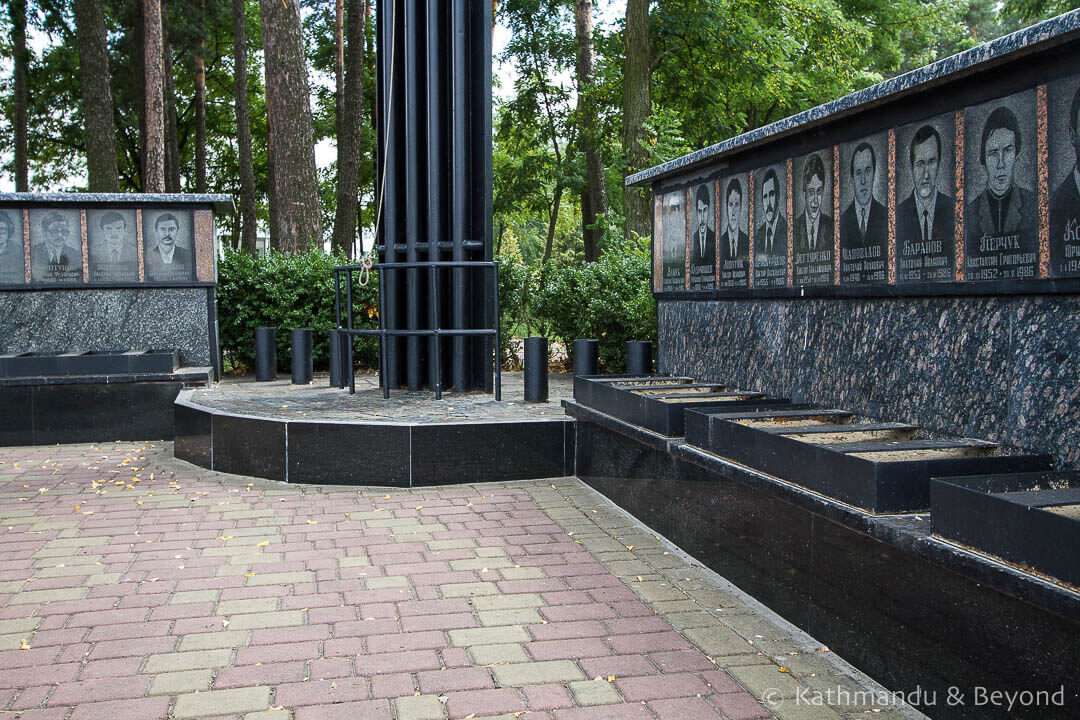
Hospital MSCH-5
A large mosaic dominates the main entrance to this 300-bed clinic.
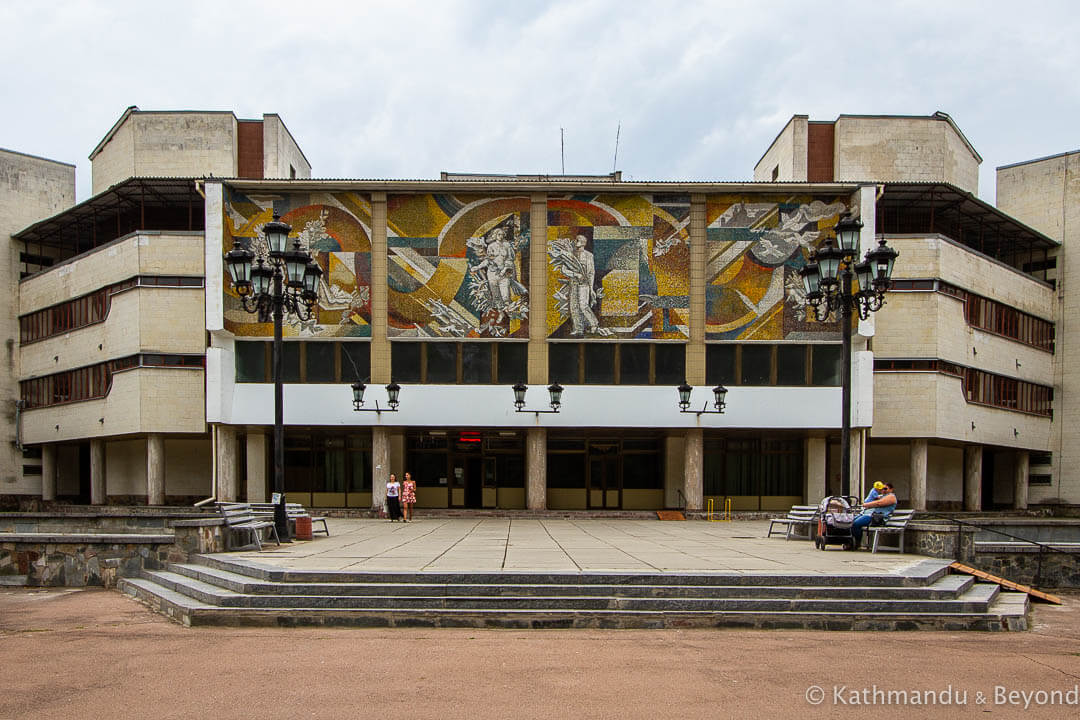
Church of God’s Prophet Elijah
Construction on this church started in 1999 but money became short for a period and it wasn’t finished until 2016. The decision to build the church in Slavutych is based on the fact that there was a Church of God’s Prophet Elijah in Chernobyl. Although it closed for quite some time, the house of worship at Chernobyl resumed services in 2001.
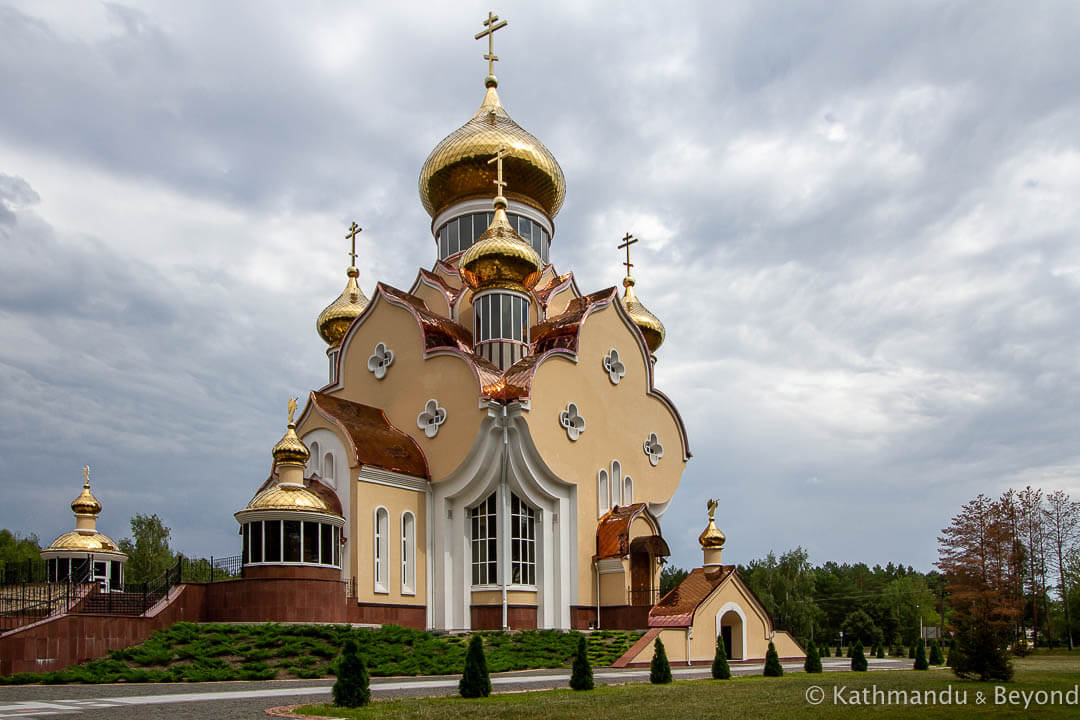
How to get to Slavutych on public transport
There are definitely buses (and I think also marshrutkas) running directly from Kyiv to Slavutych as we caught one heading in that direction on our return journey but we based ourselves in nearby Chernihiv and visited from there. There were a number of reasons for this:
Firstly, it would take 2½ to 3 hours to reach Slavutych from Kyiv and that’s not including the time it takes to cross Kyiv in order to catch the transport in the first place. That’s too much driving for a day trip in my opinion. Secondly, there is more frequent public transport from Chernihiv than there is from Kyiv. But the main reason we used Chernihiv as a base is the fact that the city itself is one of the most attractive places we have been to in Ukraine. It is a lovely place with plenty of architecturally-interesting churches, an engaging riverfront, and an impressive main square. In fact, it is a worthy side trip out of Kyiv in its own right and combining it with a visit to Slavutych is even better. Read our post about Chernihiv here.
To visit Slavutych from Chernihiv, you have to first make your way to the train station as this is where the marshrutkas depart. Bus numbers 11,12 and 43 will get you there from the city centre (4UAH). When you arrive at the train station, head to the left, ask around and someone will point you to the right spot for the marshrutkas to Slavutych. It’s a good idea to have Slavutych written in Ukrainian (Славутич) because, if you’re anything like us, you won’t be able to pronounce it properly and marshrutka drivers will just look at you blankly. In July 2017 the one-way fare was 35UAH (£1, US$1.30, €1.10). As mentioned earlier, we came back to Chernihiv on a bus that was continuing to Kyiv. It also dropped us off at the railway station and the fare was 25UAH.
You will be dropped at the small bus station in Slavutych, which is right next door to the train station.
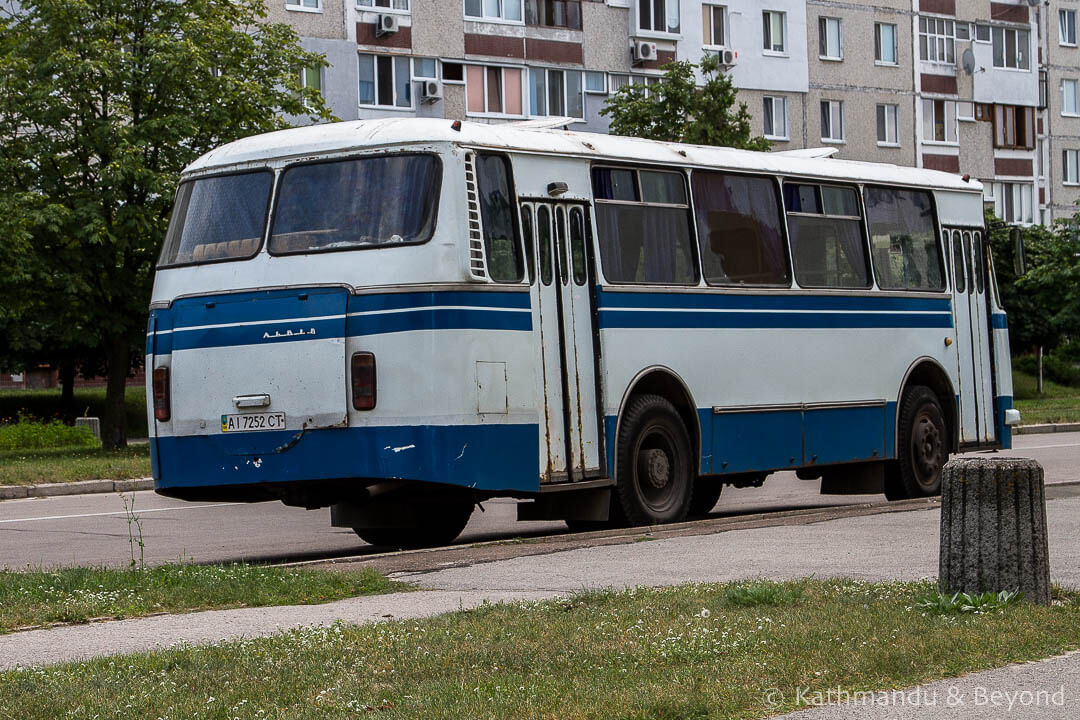
Is it OK to visit Slavutych and take photographs?
Yes. We were a little concerned about the sensitivity of visiting the city and taking photos but nobody gave us a secondary glance during the time we were there. Normally we keep our camera out in full view when walking around a place but in this instance, we decided to keep it inside a bag and only take it out when we wanted to take photos. Were we being overcautious? It’s difficult to tell but I always think it is better to be safe than sorry plus showing some respect for the situation around you never does any harm.
Is there accommodation in Slavutych?
There are a couple of sleeping options in Slavutych with the best choice seemingly the Hotel Slavutych, which is located on the northern edge of the city park and close to the main square. There is also a hostel – Four Seasons Slavutich Hostel – which has private rooms as well as dorm beds.
It is no problem to overnight in Slavutych, after all, many foreign advisors and workers previously used Slavutych as a base for Chernobyl (those days are gone now), but it is so easy to visit as a day trip from Chernihiv and you can see everything of interest in a relatively short space of time that, personally, I see little point in doing so.
Are there places to eat in Slavutych?
The best place to eat in Slavutych is the Old Tallinn restaurant. The food is tasty and ambience good. There is also an English menu and a couple of the waitresses (kitted out in traditional Estonian dress no less) speak some English. Additionally, there are fast food joints near the market, which in turn is close to the railway station, as well as the Supermarket “Dnieper” on the main square.
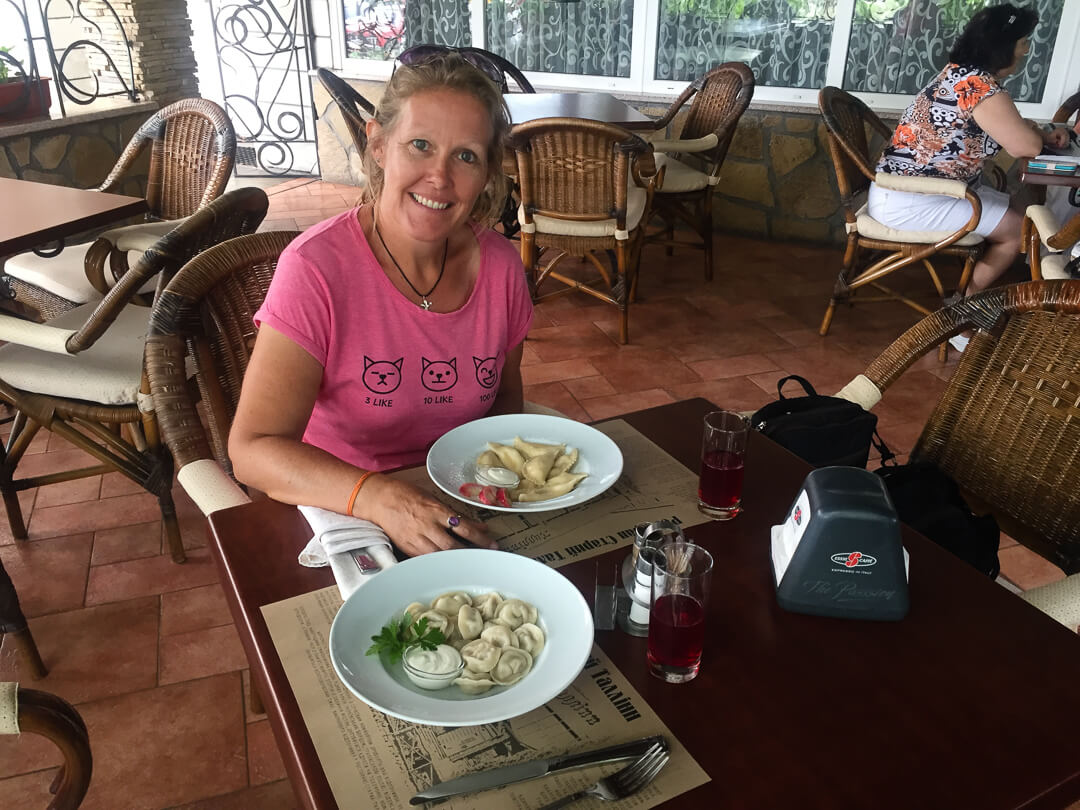
Enjoying pelmeni (dumplings) at the Old Tallinn restaurant
Is it worth visiting Slavutych?
Slavutych is worth visiting for several reasons. For people with an eye for Soviet architecture, visiting Slavutych offers an unparalleled opportunity to see many different styles in the one place. It also provides an easy opportunity to get off the beaten track in Ukraine. Some would argue that simply visiting Ukraine is off the grid but if you like the country and want to see something completely different, Slavutych fits the bill perfectly. Finally, for those interested in the history surrounding the Chernobyl disaster, assuming you’ve visited the actual plant and the informative Chernobyl Museum in Kyiv, making the trip to Slavutych is like adding the final piece to the jigsaw.
READ MORE BLOG POSTS ABOUT UKRAINE
DID YOU FIND OUR GUIDE TO SLAVUTYCH INTERESTING? PLEASE GIVE IT A SHARE OR TWO…
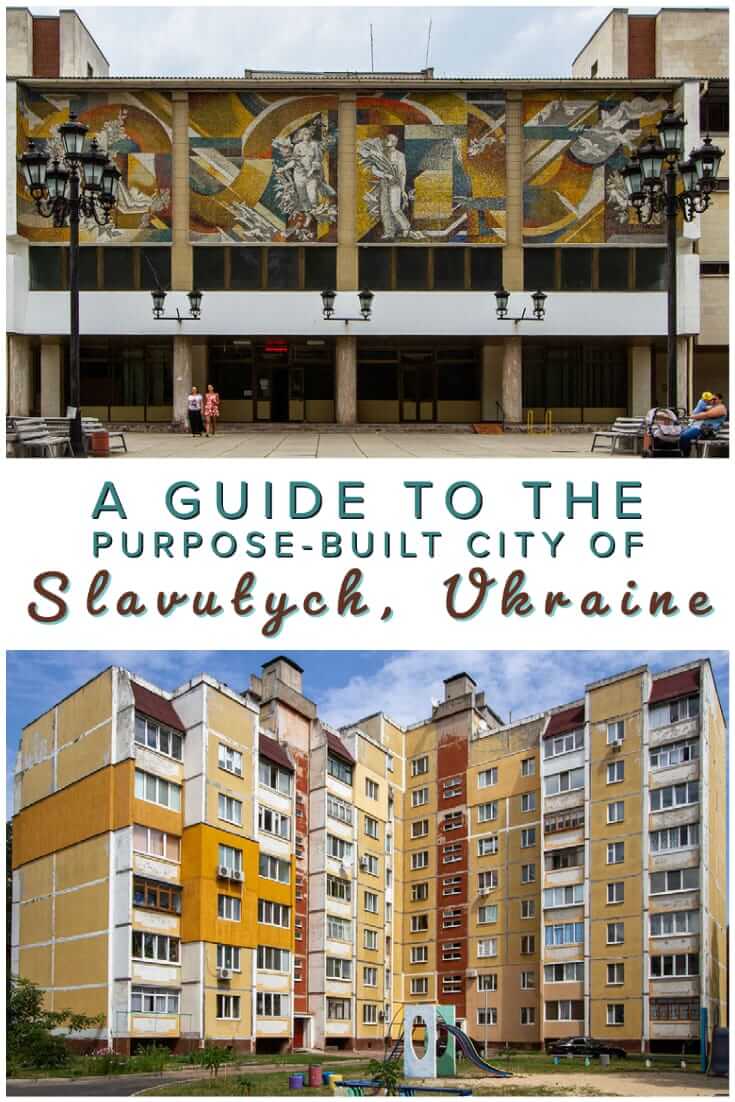
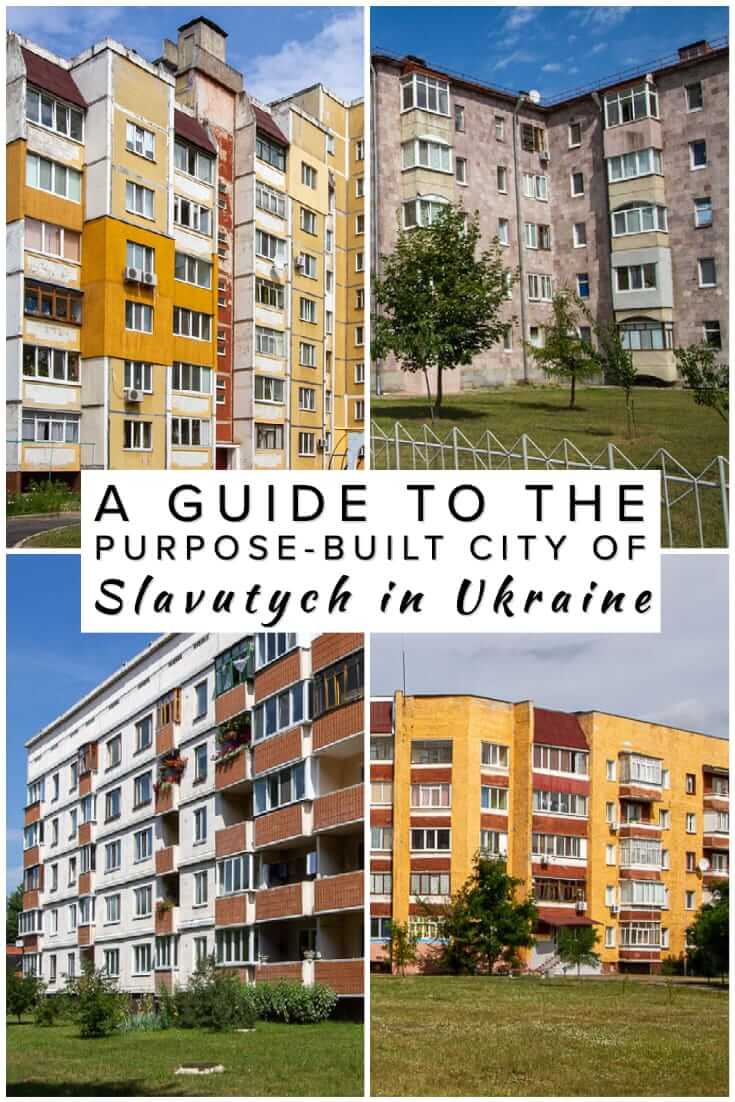
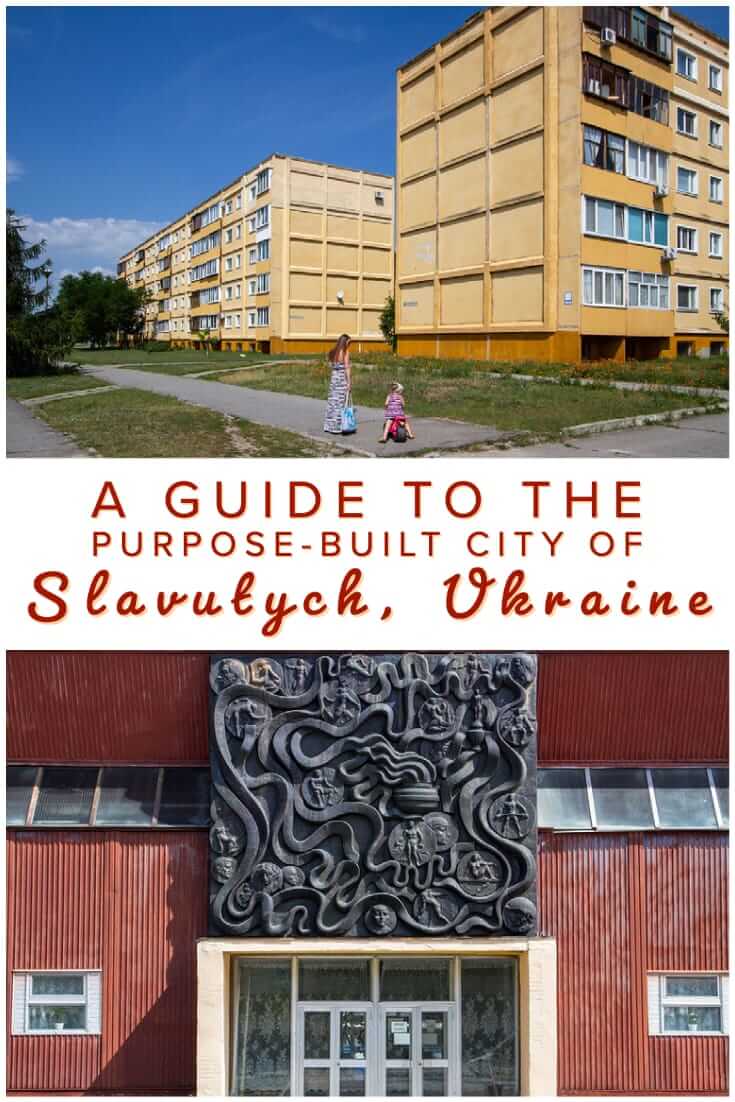

So cool seeing this place through the eyes of yall!! Great insight (and those pelmeni are making me hungryyyy). I love the pics of the trees up top- I remember them looking like this but could never capture their beauty in a photo the way yall did! Thanks for bringing back some fun travel memories 🙂
Yep, the pelmeni were pretty tasty! We thought twice about heading into the woods as one article we read said the area was home to drunks and addicts but we saw no evidence of this. The photo was taken just by the medical centre. I’m glad you enjoyed seeing photos of the city once more, it’s down to you that we visited in the first place so thanks for that!
This is really interesting. I was wondering where all the people they evaculated after Chernobyl went. I’m now off to check out your other Ukraine posts!
Thank you! I believe you live and work in Kiev – getting up there via Chernihiv for a weekend is nice and easy and Chernihiv itself is a lovely city and well worth visiting. We haven’t written about everywhere we’ve visited in Ukraine yet but if you are thinking of heading somewhere and it’s not on our blog, give us a shout as we have covered a lot of ground in the country now and may be able to help with tips etc.